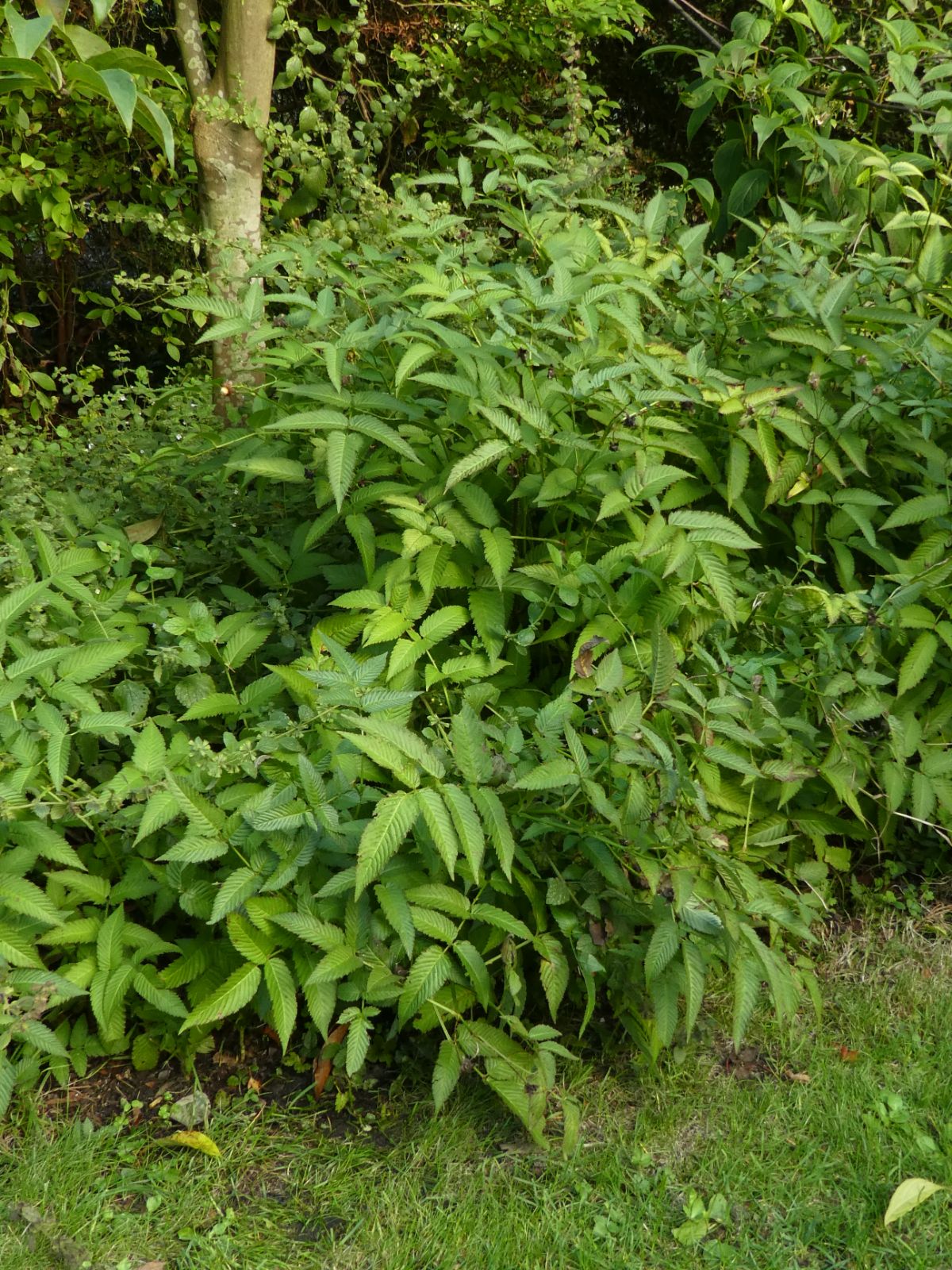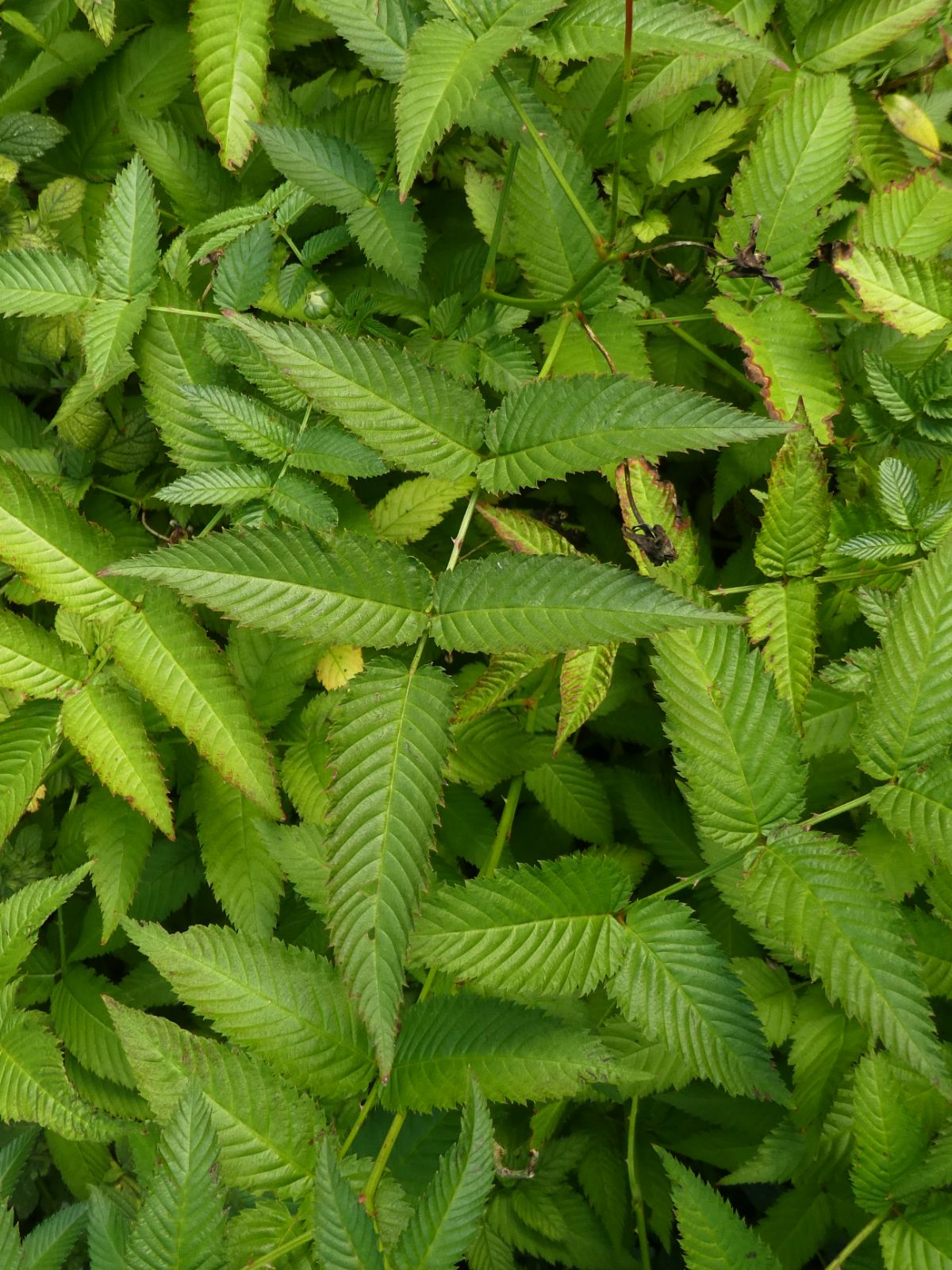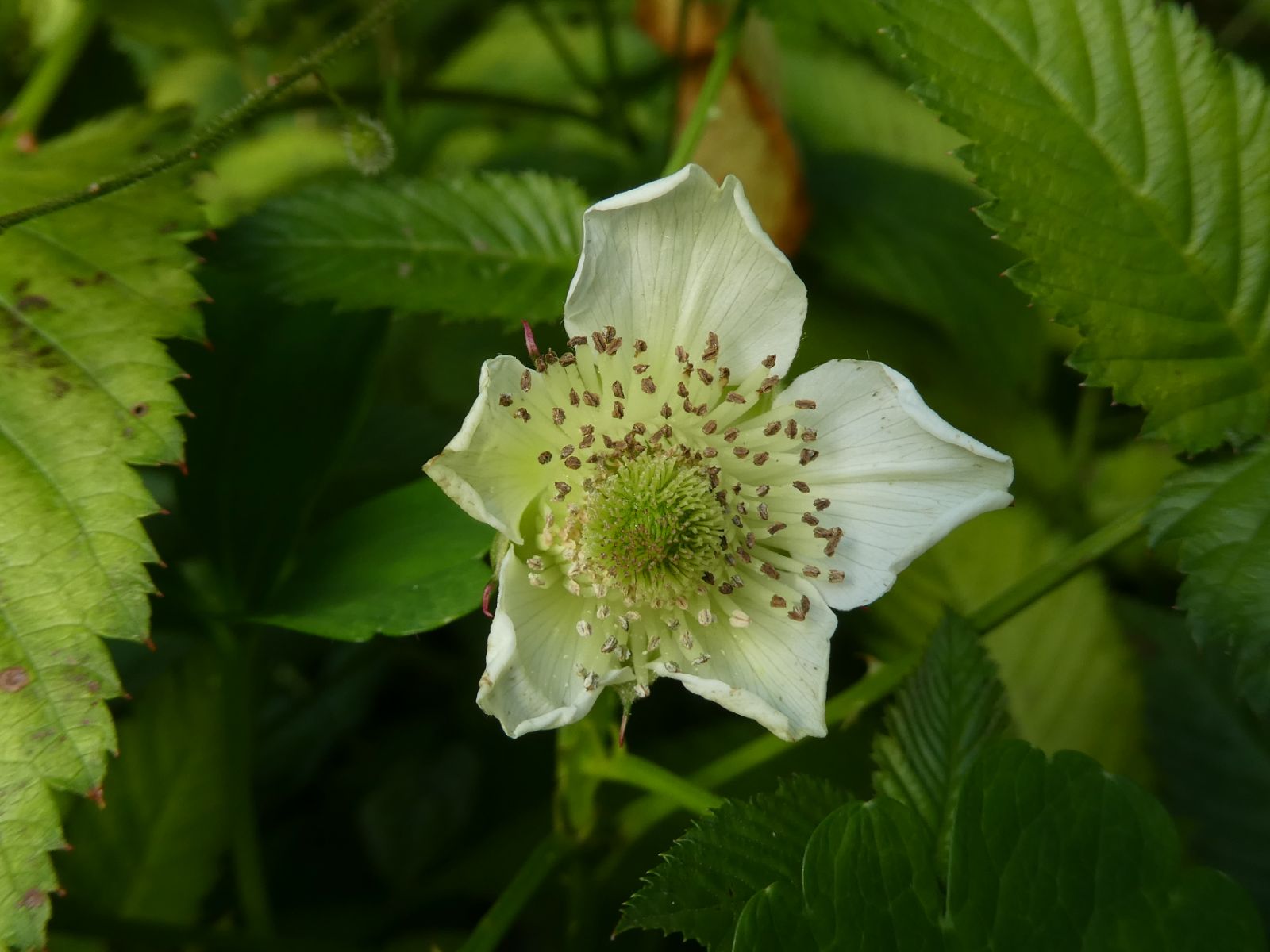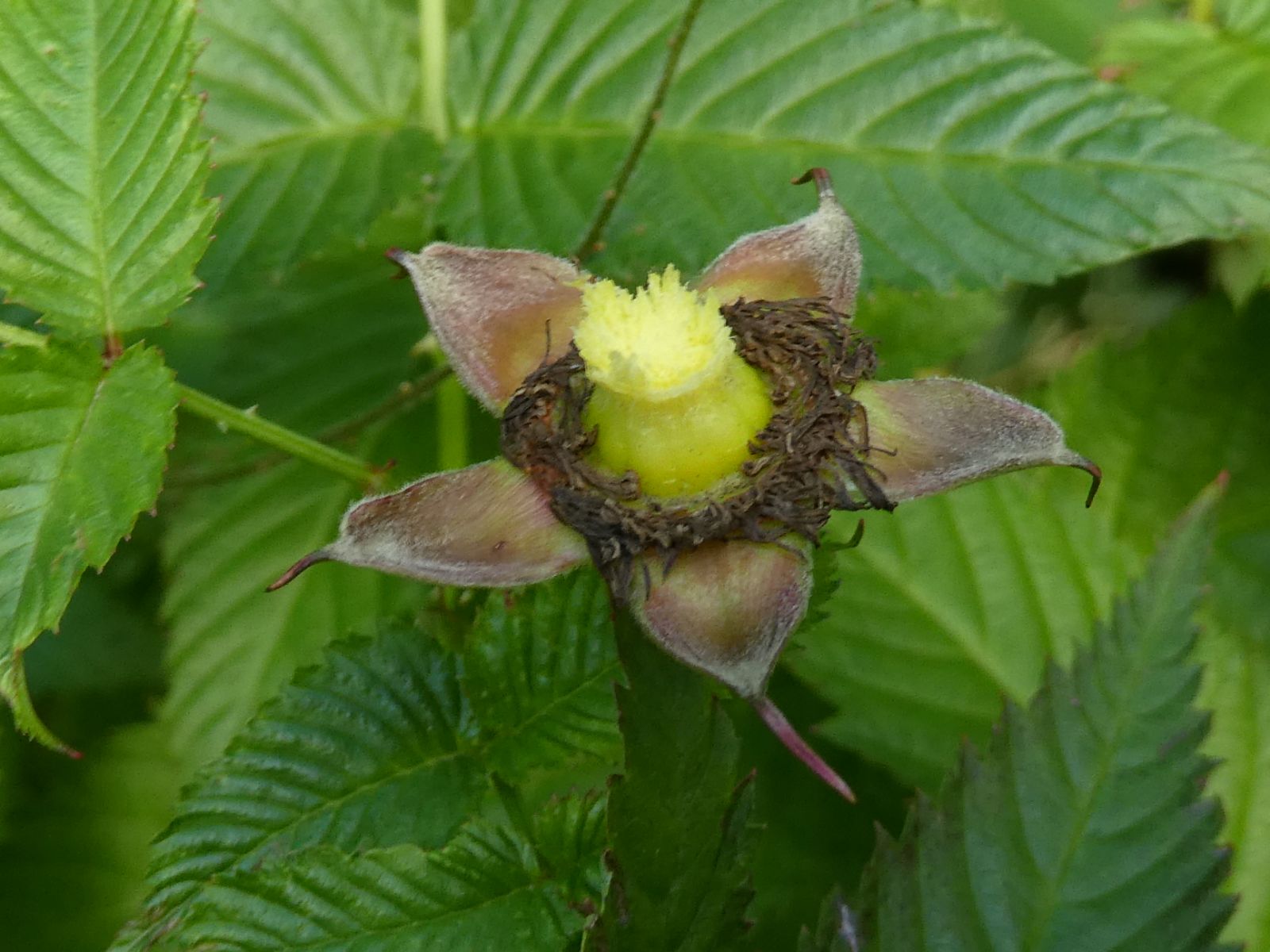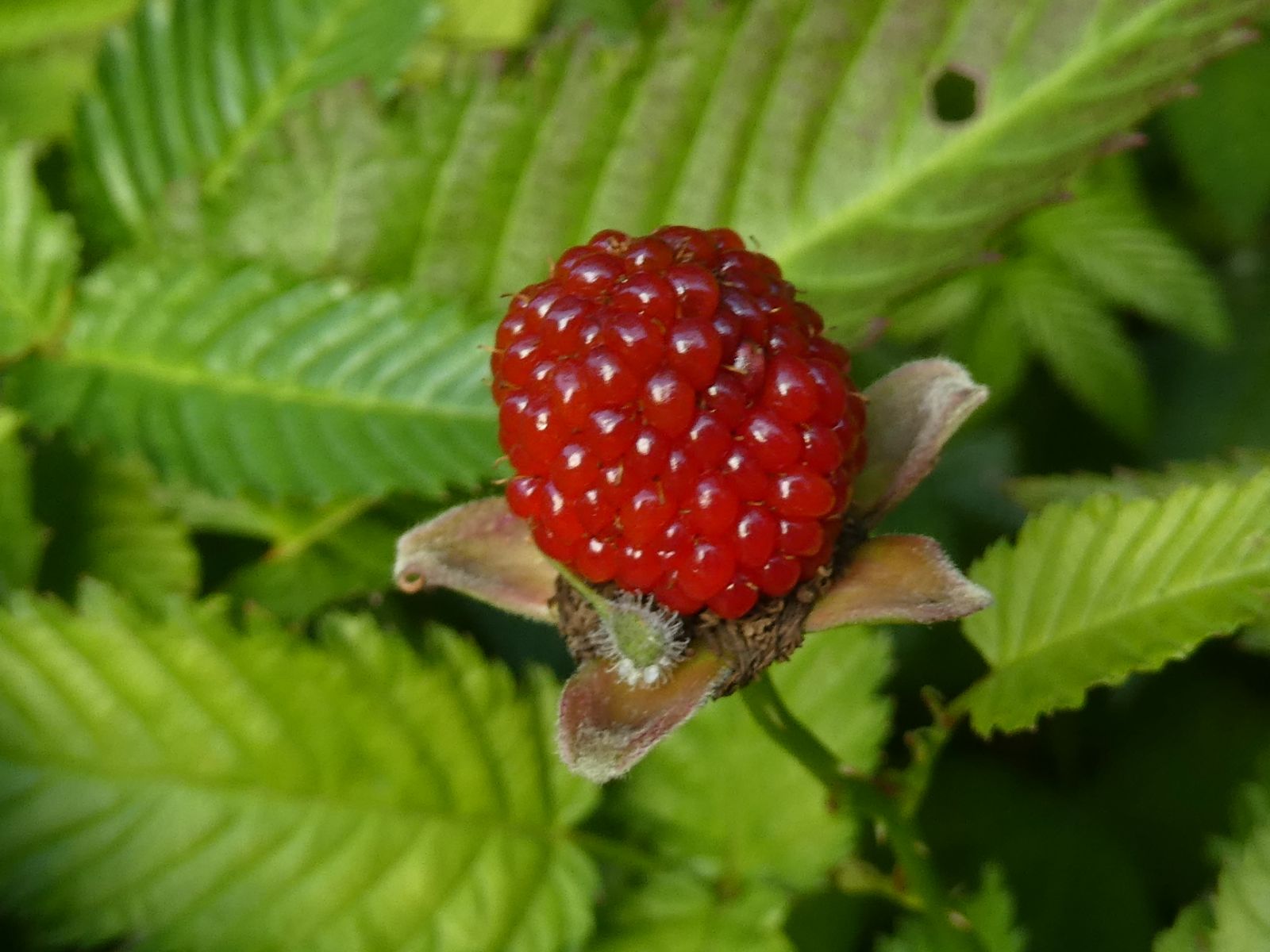Rubus illecebrosus
Credits
Article from Bean's Trees and Shrubs Hardy in the British Isles
Recommended citation
'Rubus illecebrosus' from the website Trees and Shrubs Online (treesandshrubsonline.
Genus
Synonyms
- R. rosaefolius var. coronarius f. simpliciflorus Mak.
- R. commersonii var. illecebrosus (Focke) Mak.
- R. sorbifolius Hort., not Maxim.
Other taxa in genus
- Rubus adenophorus
- Rubus amabilis
- Rubus biflorus
- Rubus caesius
- Rubus calycinoides
- Rubus chroosepalus
- Rubus cissoides
- Rubus cockburnianus
- Rubus corchorifolius
- Rubus coreanus
- Rubus crataegifolius
- Rubus deliciosus
- Rubus flagelliflorus
- Rubus flosculosus
- Rubus henryi
- Rubus hispidus
- Rubus hupehensis
- Rubus ichangensis
- Rubus idaeus
- Rubus irenaeus
- Rubus koehneanus
- Rubus kuntzeanus
- Rubus laciniatus
- Rubus lambertianus
- Rubus lasiostylus
- Rubus lineatus
- Rubus malifolius
- Rubus mesogaeus
- Rubus nepalensis
- Rubus × nobilis
- Rubus occidentalis
- Rubus odoratus
- Rubus palmatus
- Rubus parkeri
- Rubus parviflorus
- Rubus parvifolius
- Rubus parvus
- Rubus pedunculosus
- Rubus phoenicolasius
- Rubus playfairianus
- Rubus setchuenensis
- Rubus spectabilis
- Rubus subornatus
- Rubus thibetanus
- Rubus trianthus
- Rubus tricolor
- Rubus trifidus
- Rubus ulmifolius
A subshrub with creeping, underground stems, sending up green annual flowering shoots 2 to 3 ft high, which are glabrous, angled, and armed with curved prickles. Leaves pinnately compound; leaflets mostly five or seven, lanceolate, 1 to 3 in. long, 1⁄2 to 7⁄8 in. wide, acuminate, glabrous or slightly downy above, usually downy on the veins beneath; rachis prickly. Flowers white, about 13⁄4 in. wide, borne in late summer in few-flowered bracted corymbs. Stamens numerous. Fruits red, round or broadly ellipsoid, about 11⁄4 in. wide, with numerous drupelets.
Native of Japan; introduced to the USA towards the end of the last century and thence to Europe. It is grown for its ornamental strawberry-like fruits, which are sweet but insipid, and is recorded as an escape from gardens on the continent and in N. America. Strictly it is not a shrub, as its woody stems creep underground, and the annual stems die back each winter.
R. illecebrosus is allied to the wide-ranging Asiatic R. rosiflorus Sm., of which a double-flowered form ‘Coronarius’ is sometimes grown in greenhouses.

